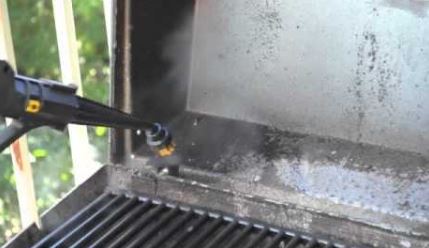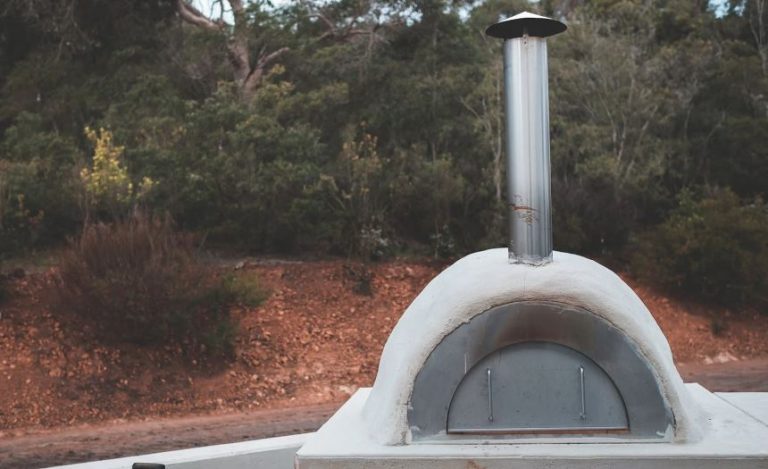Can you use a regular grill in an outdoor kitchen?
Can a Regular Grill Be Used in an Outdoor Kitchen?
Over time, a barbecue chef and his or her grill develop a mutual understanding and a unique working relationship. Doesn’t matter if its gas grills, charcoal grills or another fuel. It is natural to want to include your grilling partner in any new plans you have for an outdoor kitchen.
Is this, however, feasible? The easy answer is yes but there are a few other options to consider before you finish your kitchen design.
A regular grill can be used in an outdoor kitchen if you customize the surrounding cabinetry and countertops to make the outdoor grill installation appear seamless. The look you are after is built-in, not jury-rigged.
If your existing grill was purchased with a separate grill unit and cart, then yes, it is possible to make the transition to built in seamless.
Free-standing vs. built-in grills: What’s the Difference?
Whether you like propane, charcoal, or natural gas, the grill will be the focal point of your outdoor kitchen and a crucial element of your outdoor experience. Choosing your grill is an important component of building your kitchen. Before you make your final choice, consider the advantages and disadvantages of both free-standing and built-in grills.
Free-standing barbecue grills are less expensive, making them a more cost-effective option. Furthermore, free-standing grills provide the most versatility. Depending on how your outdoor kitchen is designed, you may be able to move your grill around and replace it more readily as necessary.
You can’t cook as much at once with free-standing grills because they’re smaller and often less powerful than built-in grills. Furthermore, while high-end free-standing grills are well-made, they are more susceptible to the elements and do not often last as long as built-in grills.
Built-in grills have the advantage of being larger than free-standing grills. Built-in grills can blend in with the rest of your outdoor kitchen’s design while also providing more countertop and food preparation space on bbq islands. Most even have extra space adjacent to the grill to keep your cooking gear. These grills are more protected, endure longer, and require less care than free-standing grills because they are integrated into a structure. Built-in grills can be somewhat expensive, depending on how they’re built. Because they can’t be moved once they’re installed in an outdoor kitchen, you’ll have to live with your decision until you replace the grill or modify the design—both of which will cost more money.
Getting the Most Out of Your Free-Standing Grill
You can incorporate a free-standing grill as part of your outdoor kitchen design if cost is a problem or you already have a brand-new grill that you are experienced with. Although the supports cannot be removed and the grill used as a built-in, you can incorporate your free-standing grill into your design by making a few key modifications.
Determine how your grill will be integrated into your outdoor kitchen design. If you still want to be able to move the grill around, look for one that has the flexibility of two or three different kitchen island potential grill locations, as well as enough area to roll it from one location to the next. Build an alcove or customized countertops to surround your barbecue with a functional workspace if you want it to stay in one place.
If you go with the alcove option, make sure you verify how much clearance you’ll need around your grill to make sure it gets enough air flow.
Ensure that any construction materials surrounding your grill are made of non-combustible or low-combustible materials such as stone or butcher block. A combustible material might be dangerous to you and your guests.
The Advantages of a Built-In Grill
Built-in grills are usually the grill of choice when creating an outdoor kitchen because they last so much longer than free-standing barbecues. Aside from its durability, the most appealing feature of a built-in grill is how easily it can be integrated into various outdoor kitchen designs.
Consider an island design that combines the grill and prep area with a small socializing area to create an entertainment hub if you have a tight space. For tiny places, placing the grill against a wall is also an excellent idea, especially if you only need to accommodate one chef. Consider an L-shaped or U-shaped design for larger spaces. Both provide more counter space as well as space for other useful objects such as a refrigerator, sink, or even an outside dishwasher. Make sure the grill is at a location that keeps fumes and carbon monoxide away from you and your family when picking a barbecue site. An outdoor kitchen should also be situated away from doors into your home so that cooking smoke does not migrate indoors.
If you are not DIY handy, a professional can help you configure your outdoor kitchen island so that it accommodates your existing bbq grille.
Because of the expense of a new grill, sometimes you just need to be able to reuse what you have in your new kitchen space.
Can I remove the legs from my existing barbecue and utilize it as a built-in grill?
In almost every case, the answer is no. The maker of your higher-end barbecue may sell a cart that also fits your grill head, but most box store/consumer models aren’t. Even if you could remove the legs without jeopardizing the grill’s strength and integrity, it may not be constructed properly for use in an enclosure.
However, we have seen some clever conversions done by talented DIYers who have managed to make this work.
Is it possible to create an alcove in my outdoor kitchen to accommodate my grill?
If your built-in grill includes folding sides that can be used as a work surface, you should remove them. Leaving them on, even folded down, results in large gaps between the grill and the surround that are ugly.
Check your owner’s handbook to learn what clearances are advised around the built-in grill. Even if you’re constructing it out of non-combustible materials like stone and block, you may need to provide adequate ventilation for the grill to function properly.
If you’re installing stone veneer, you can use the veneer to give the grill a built-in look by veneering around the free standing unit.
You should also plan ahead for the next grill you intend to buy and make the cutout for it. Most consumer grills in the sub-$1,000 price range are only good for a limited amount of time. When it’s time to update, you don’t want to have to redo a lot of masonry!
Can I construct a structure around my grill that looks good?
It is possible, especially if you are DIY handy or are experienced building with your chosen materials such as the veneer tip we highlighted above. You don’t want to ruin all your hard work with a retrofitting that doesn’t match the rest of your outdoor kitchen and that looks jury-rigged. But if your grill is newer and you can provide for ventilation and clearances, it is possible to make it work.







